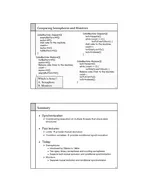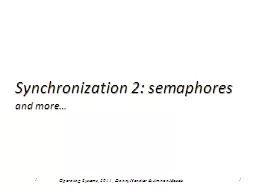PDF-Concurrency Issues Past lectures Problem Safely coordinate access to shared resource Solutions
Author : lindy-dunigan | Published Date : 2014-12-13
deadlock Starvation threads wait indefinitely eg because some other thread is using a resource Deadlock circular waiting for resources Deadlock starvation but not
Presentation Embed Code
Download Presentation
Download Presentation The PPT/PDF document "Concurrency Issues Past lectures Problem..." is the property of its rightful owner. Permission is granted to download and print the materials on this website for personal, non-commercial use only, and to display it on your personal computer provided you do not modify the materials and that you retain all copyright notices contained in the materials. By downloading content from our website, you accept the terms of this agreement.
Concurrency Issues Past lectures Problem Safely coordinate access to shared resource Solutions: Transcript
Download Rules Of Document
"Concurrency Issues Past lectures Problem Safely coordinate access to shared resource Solutions"The content belongs to its owner. You may download and print it for personal use, without modification, and keep all copyright notices. By downloading, you agree to these terms.
Related Documents














